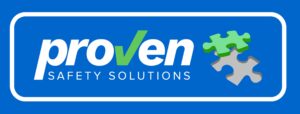Safety audits play a pivotal role in ensuring the well-being of employees, visitors, and the overall success of an organisation. In this article, we will delve into the world of safety audits, exploring the importance of health and safety audits, the process of conducting site safety audits, management safety audits, and best practices for workplace safety audits. We will also discuss strategies to achieve successful safety audits and the significance of safety compliance assessments.
Understanding Safety Audits
Safety audits, often referred to as health and safety audits, are systematic and comprehensive evaluations of an organisation’s safety procedures, policies, and practices. Their primary aim is to identify potential hazards, assess the effectiveness of safety measures, and ensure compliance with regulatory standards. Conducting regular safety audits is a proactive approach to mitigating risks and preventing accidents in the workplace.
The Effective Safety Audit Process
Conducting a safety audit involves a structured process that begins with planning and preparation. The audit team, comprising experienced professionals, defines objectives, scopes, and criteria for the audit. Next, they gather relevant documentation, such as safety manuals and incident reports, to gain insights into existing safety measures.
On-site inspections are a crucial part of safety audits. This step involves assessing physical aspects of the workplace, machinery, equipment, and employee practices. Observations are made, and data is collected to analyse potential risks and safety compliance.
Management Safety Audits
Management safety audits focus on evaluating the effectiveness of safety management systems within an organisation. This includes assessing the commitment of leadership to safety, communication of safety policies, and the allocation of resources for safety initiatives. Management audits help in aligning organisational objectives with safety goals and ensuring that safety is a top priority.
Workplace Safety Audits
Workplace safety audits, on the other hand, concentrate on the daily safety practices followed by employees. They assess whether employees are adhering to safety procedures, using personal protective equipment, and reporting safety incidents. Workplace safety audits provide valuable insights into the culture of safety within an organisation and identify areas that require improvement.
Successful Safety Audit Strategies
Achieving successful safety audits requires a proactive approach and a commitment to continuous improvement. Here are some strategies to enhance the effectiveness of safety audits:
- Clear Objectives: Define clear and specific objectives for each audit to ensure a focused assessment.
- Trained Audit Teams: Ensure that audit teams are well-trained and knowledgeable about safety standards and regulations.
- Document Findings: Thoroughly document audit findings, including observations, recommendations, and corrective actions.
- Feedback and Communication: Share audit results with employees and management, fostering open communication about safety concerns and improvements.
- Regular Audits: Conduct safety audits regularly to keep safety standards up to date and compliant with evolving regulations.
Safety Compliance Assessments
Safety compliance assessments involve evaluating an organisation’s adherence to safety regulations and standards set by local authorities and industry bodies. It ensures that an organisation operates within the legal framework and minimises the risk of fines or legal repercussions. Regular compliance assessments help organisations stay up-to-date with changing regulations and maintain a safe work environment.
Safety Audit Best Practices
To ensure that safety audits are effective and yield meaningful results, consider the following best practices:
- Engage Employees: Involve employees in the audit process, as they can provide valuable insights and suggestions.
- Prioritise Hazards: Focus on high-risk areas and prioritise corrective actions accordingly.
- Continuous Improvement: Use audit findings to drive continuous improvement in safety measures and practices.
- Benchmarking: Compare audit results with industry benchmarks and best practices to identify areas for improvement.
Conclusion
Safety audits are not merely a regulatory requirement; they are a vital tool for preserving the well-being of employees and the sustainability of organisations. By conducting health and safety audits, organisations can proactively identify risks, enhance safety measures, and ultimately create a safer work environment.
Employing successful safety audit strategies and adhering to safety compliance assessments ensure that an organisation remains on the path to safety excellence. In a world where safety is paramount, safety audits stand as the guardians of a secure and prosperous future for both employees and organisations alike.
Proven Safety Solutions save time and money!
For specific, tailored advice, or support for your organisation, contact Proven Safety Solutions today on 0400 023 404 to discuss and improve your confidential circumstances.
If you have any specific aspects, you’d like more information on or if you have further questions, reach out by clicking here!

This blog has been written with the aid of software, including search engines and writing tools, then checked by our team prior to release. It is general in nature.



